Cologne Cathedral Remains Standing Tall Amidst The Wreckage Left By Allied Bombings In 1944
This is a black-and-white photo of the famous Cologne Cathedral, a Gothic masterpiece and the largest church in Northern Europe during World War II. Despite suffering fourteen hits from aerial bombs, the cathedral did not collapse and remained standing tall in a city that was otherwise flattened.
The twin spires of Cologne Cathedral, rising approximately 157 meters (515 feet) high, were easily recognizable. Therefore, they were used by Allied aircraft as a navigational landmark during bombing raids deeper into Germany, which may be one reason why the cathedral was not destroyed.
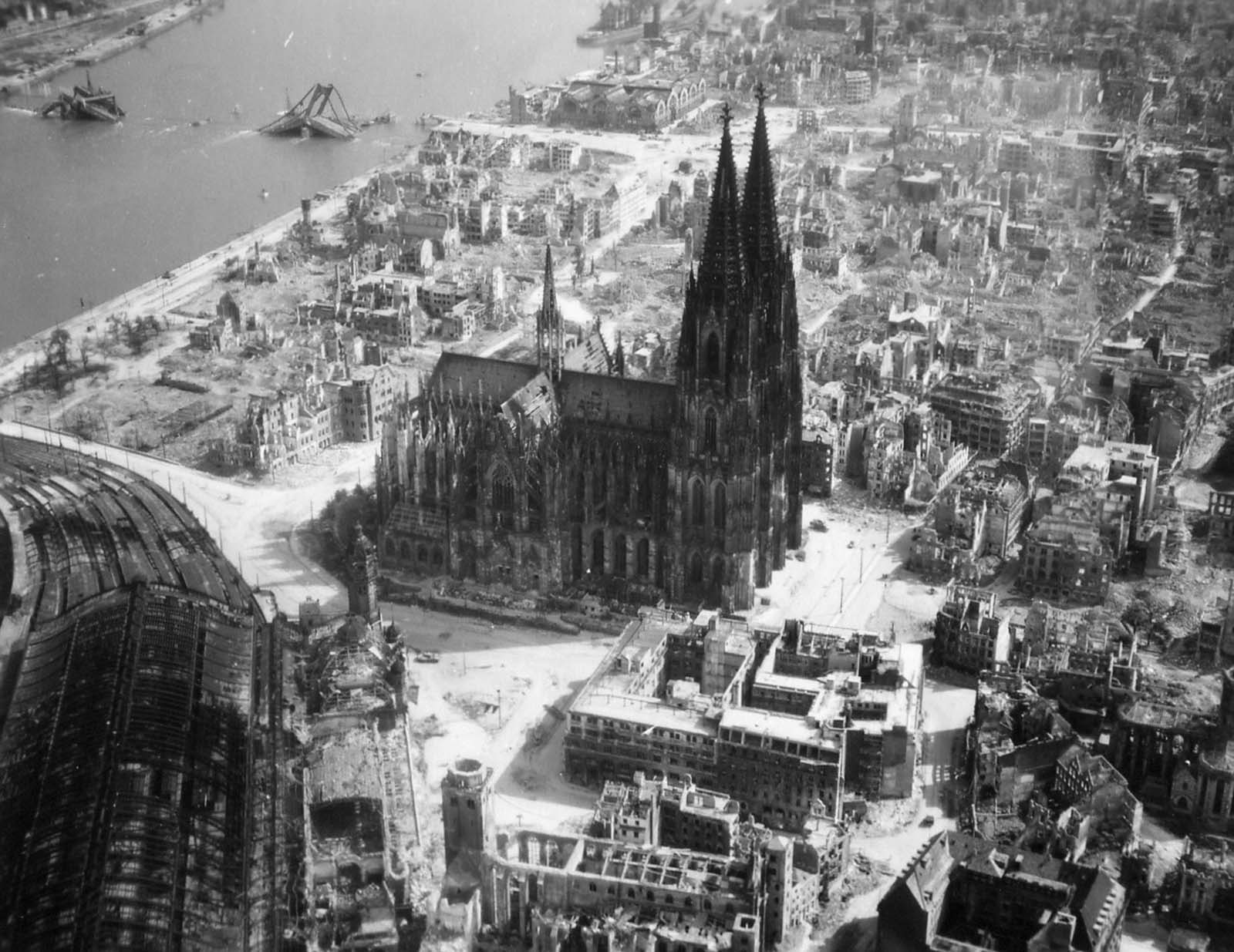
Allied pilots used the cathedral to help determine their location, but this was less important in the last days of the war when the Allies had complete control of the skies. Many military leaders also wanted to preserve buildings with cultural significance.
Bombers flying at lower altitudes were more accurate, but high-altitude bombers were often very inaccurate. Pilots were lucky if even a small number of their bombs hit their intended targets. Targeting the cathedral, even though it was large, was very difficult with the bombing technology of that time.
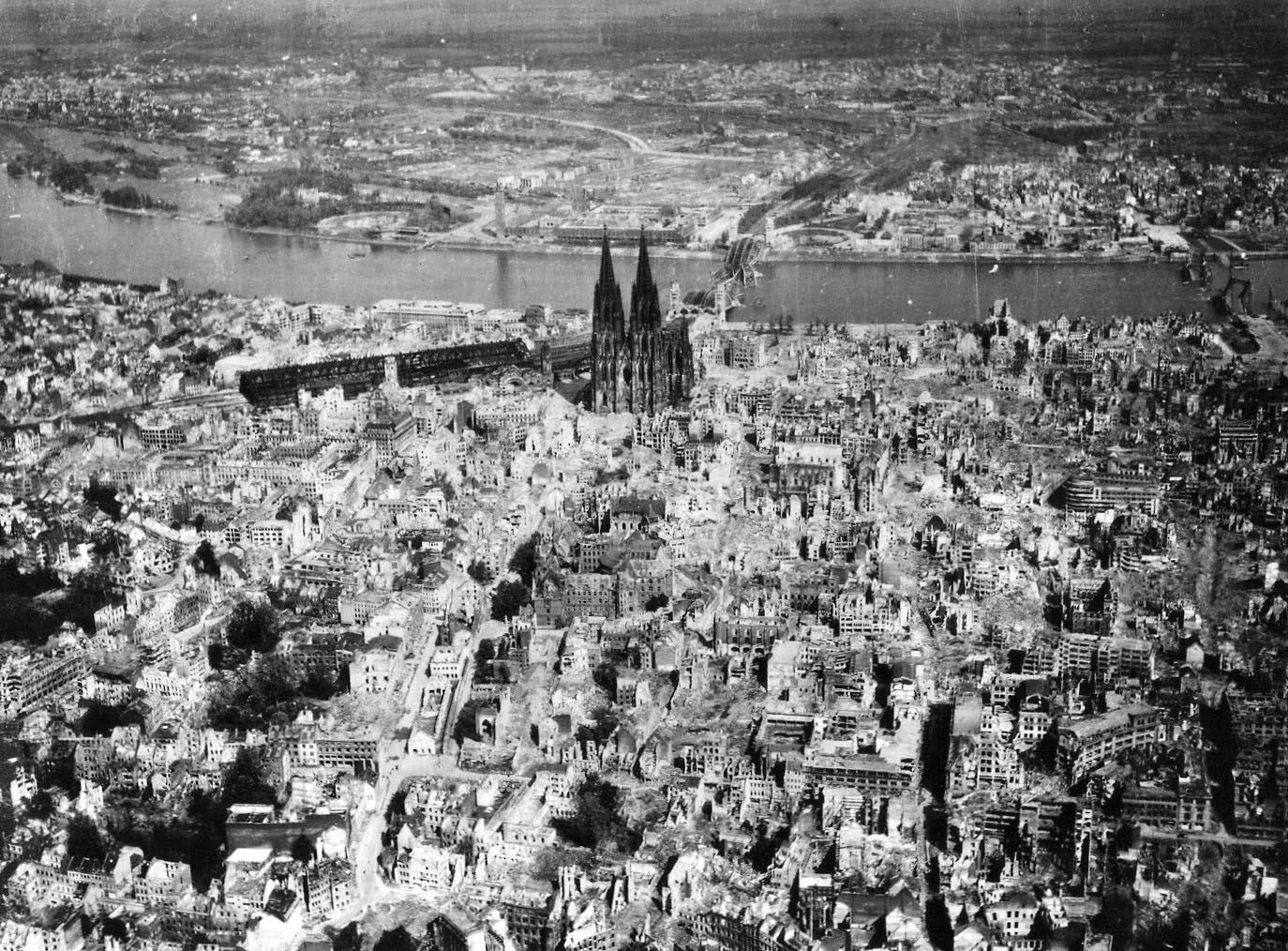
After the war, repairs on Cologne Cathedral were finished in 1956. An emergency repair made in 1944 using poor-quality brick from nearby ruins was visible at the base of the northwest tower until 2005. This brick served as a reminder of the war until the section was rebuilt to match the original design.
Construction of Cologne Cathedral began in 1248 but stopped in 1473, leaving it unfinished. Work restarted in the 19th century and was completed in 1880 according to the original plan.
The cathedral is 144.5 meters (474 feet) long, 86.5 meters (284 feet) wide, and its towers are about 157 meters (515 feet) tall. It is the largest Gothic church in Northern Europe.
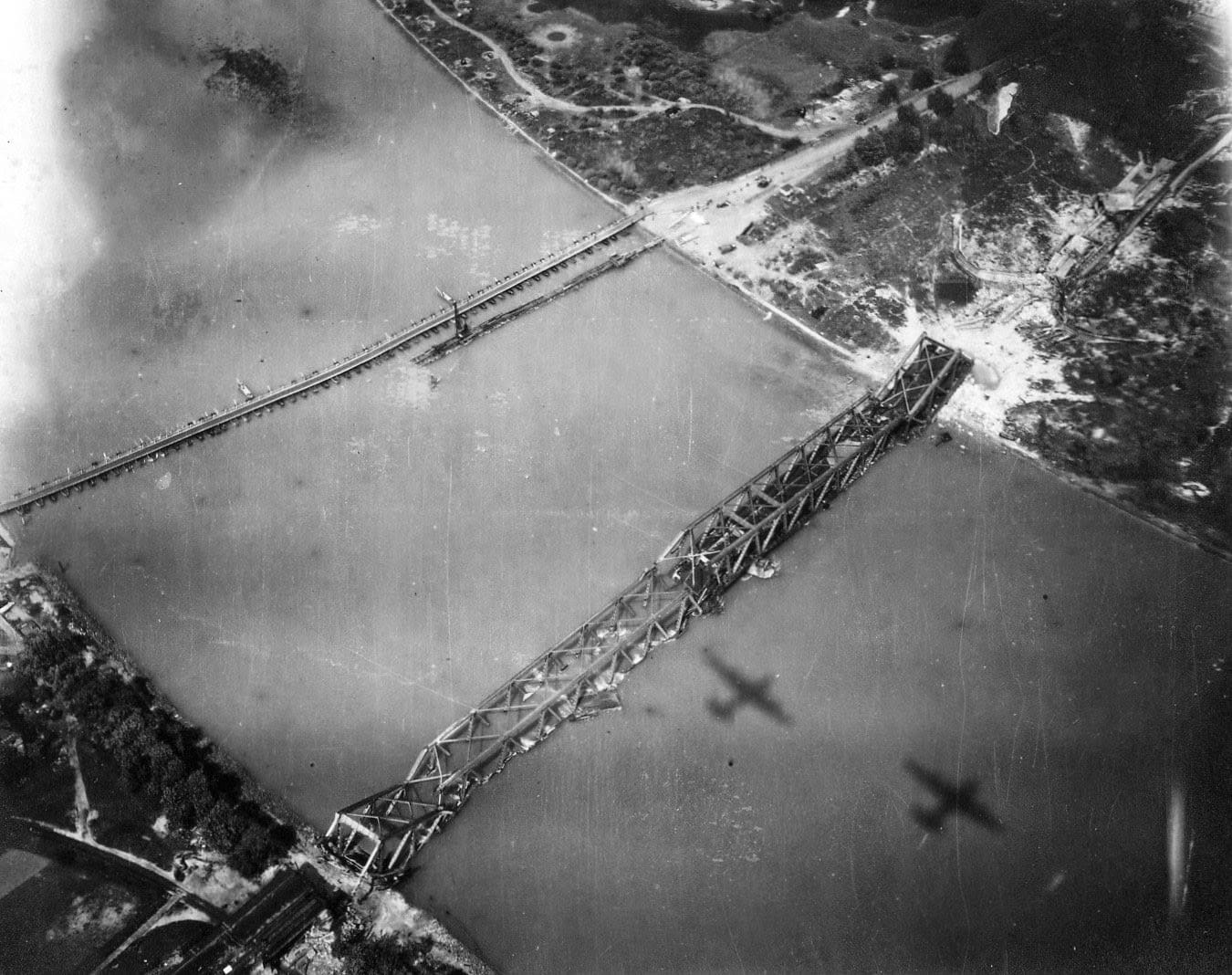
In early 1942, the RAF bomber command, led by Sir Arthur Harris, intensified the Allies’ air offensive against Germany.
The attacks targeted factories, rail depots, dockyards, bridges, dams, and entire cities to destroy Germany’s war industries and deprive civilians of their homes, weakening their will to fight.
The new strategy focused on area bombing, aiming for the centers of towns during night raids. On the night of May 30–31, over 1,000 bombers attacked Cologne, heavily damaging one-third of the city’s buildings.
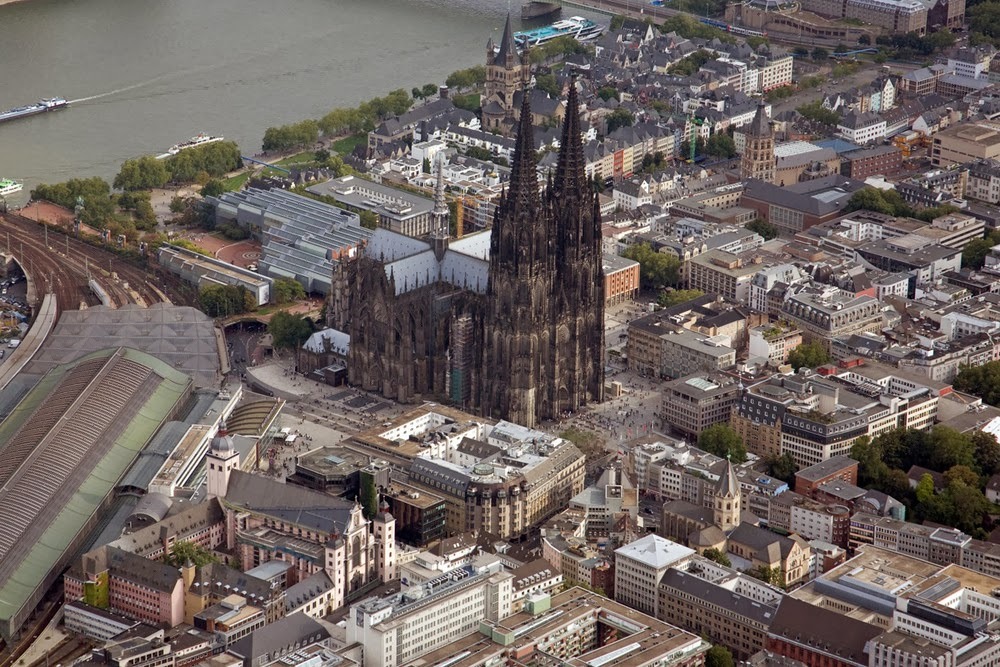
Throughout World War II, Cologne was bombed 262 times by the Allies, all by the RAF. They dropped a total of 34,711 long tons of bombs on the city, resulting in the deaths of 20,000 people due to aerial bombardments.
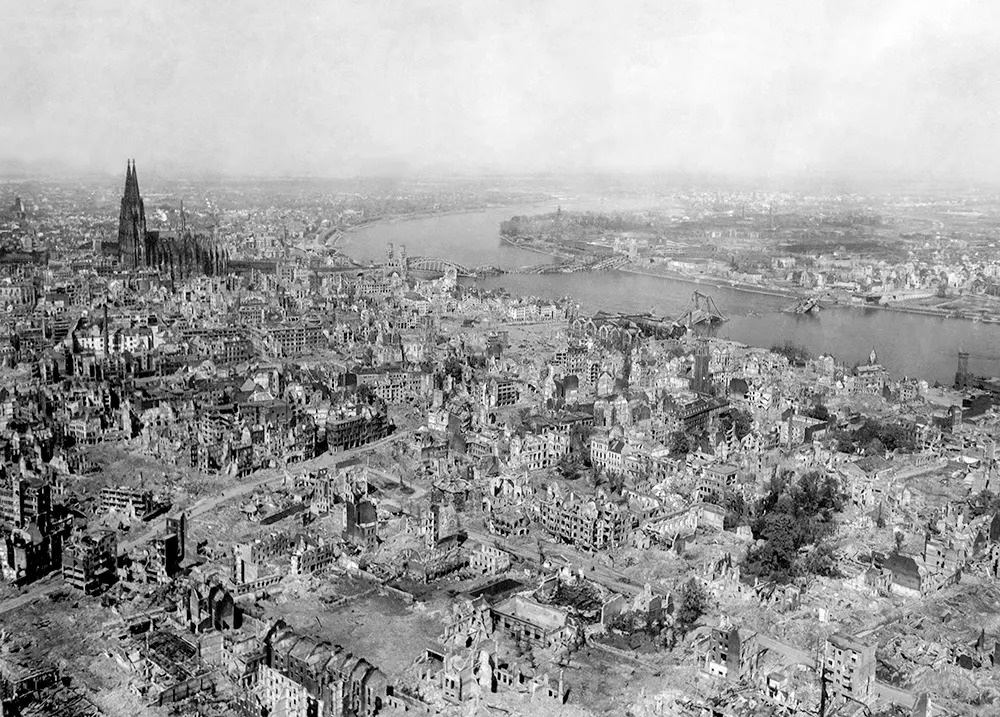

In an official British war artwork, we see a vivid depiction of a bombing raid on Cologne. The city’s cathedral stands prominently in the scene, its majestic towers rising amidst the chaos of war.
Despite enduring numerous hits from Allied bombs, the cathedral miraculously survived the onslaught. This artwork captures the resilience of the iconic structure, standing tall amidst the destruction, a symbol of hope amid the devastation of war.
Today, Cologne Cathedral stands as a testament to resilience and hope. Despite the extensive damage inflicted during World War II, the cathedral’s survival and restoration reflect both its historical and cultural significance. The scars it bears serve as a reminder of the past and a symbol of the strength and perseverance of the human spirit.
Here are some pictures of Cologne Cathedral:
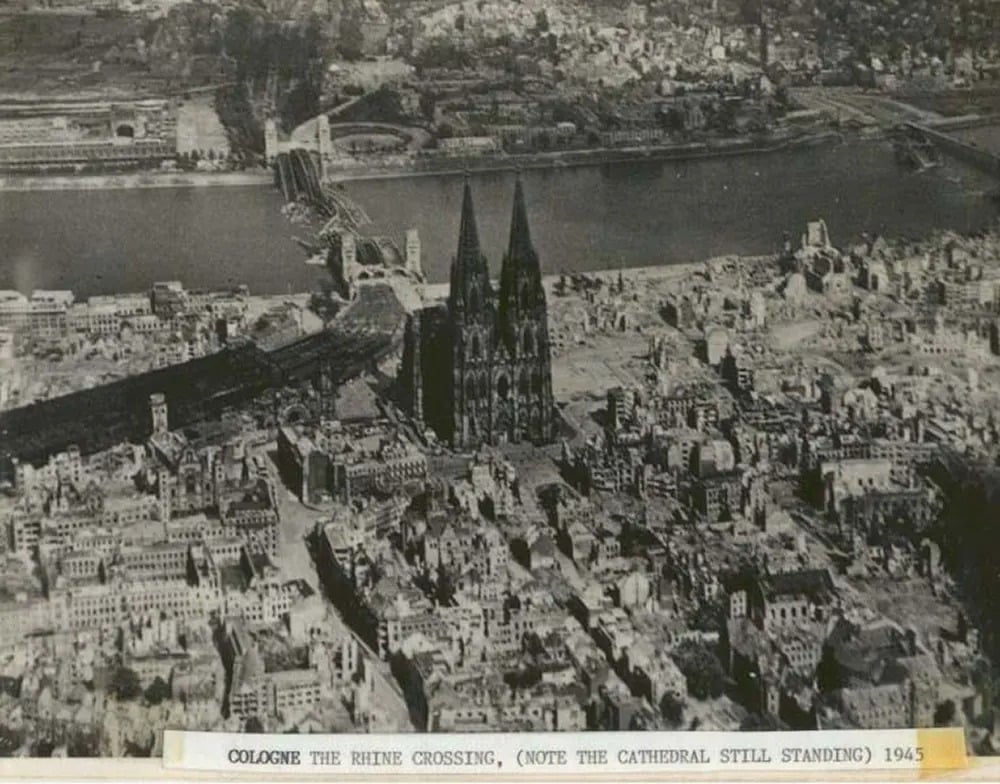
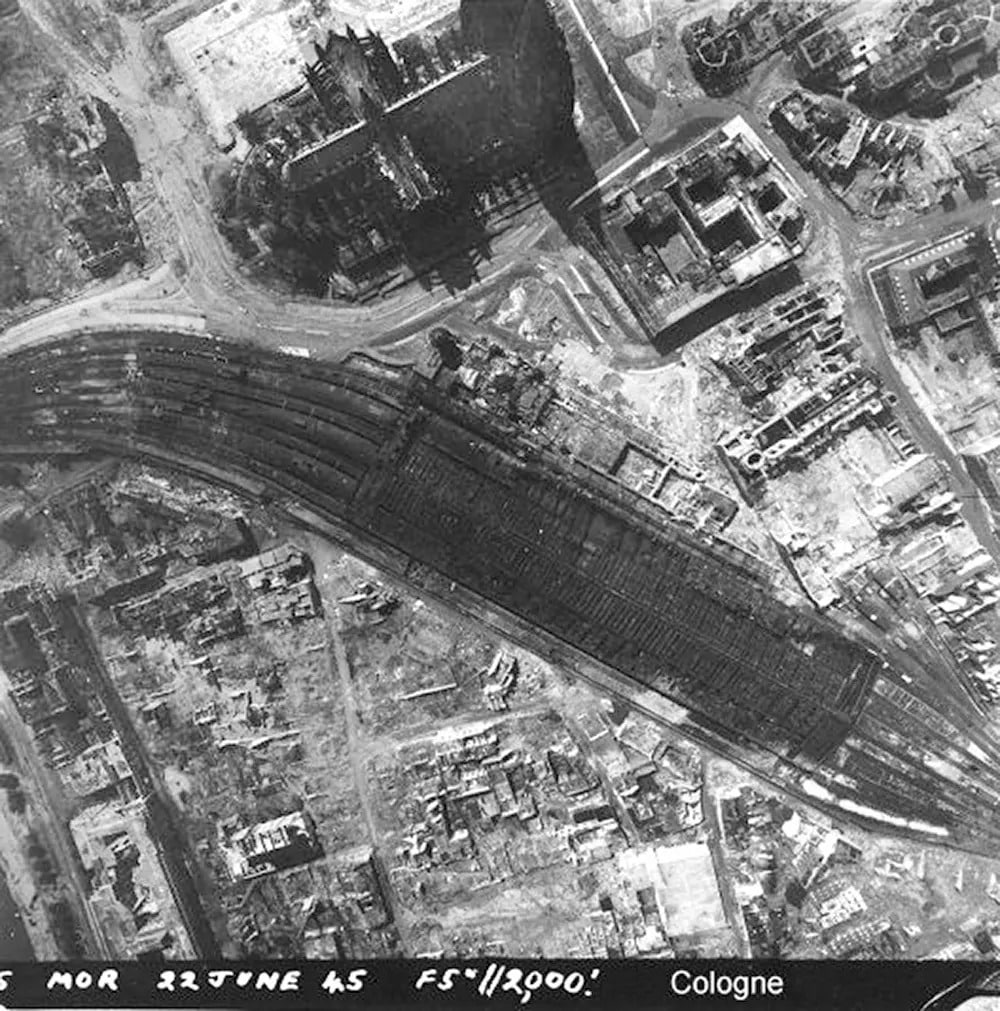

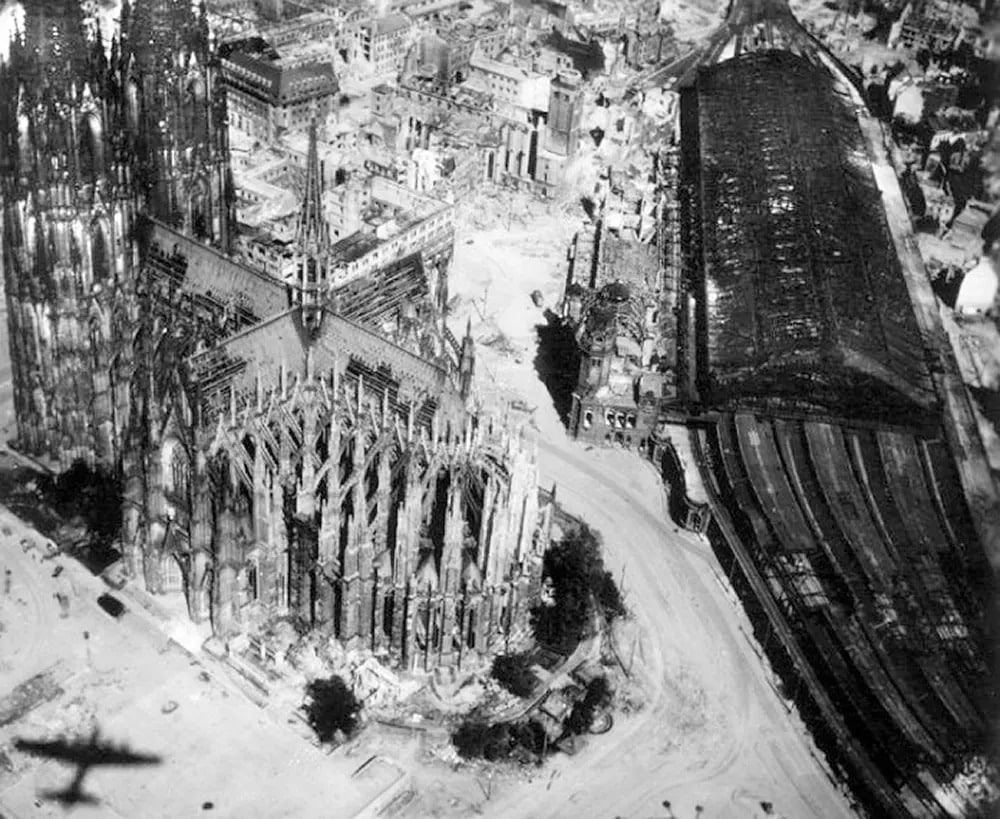
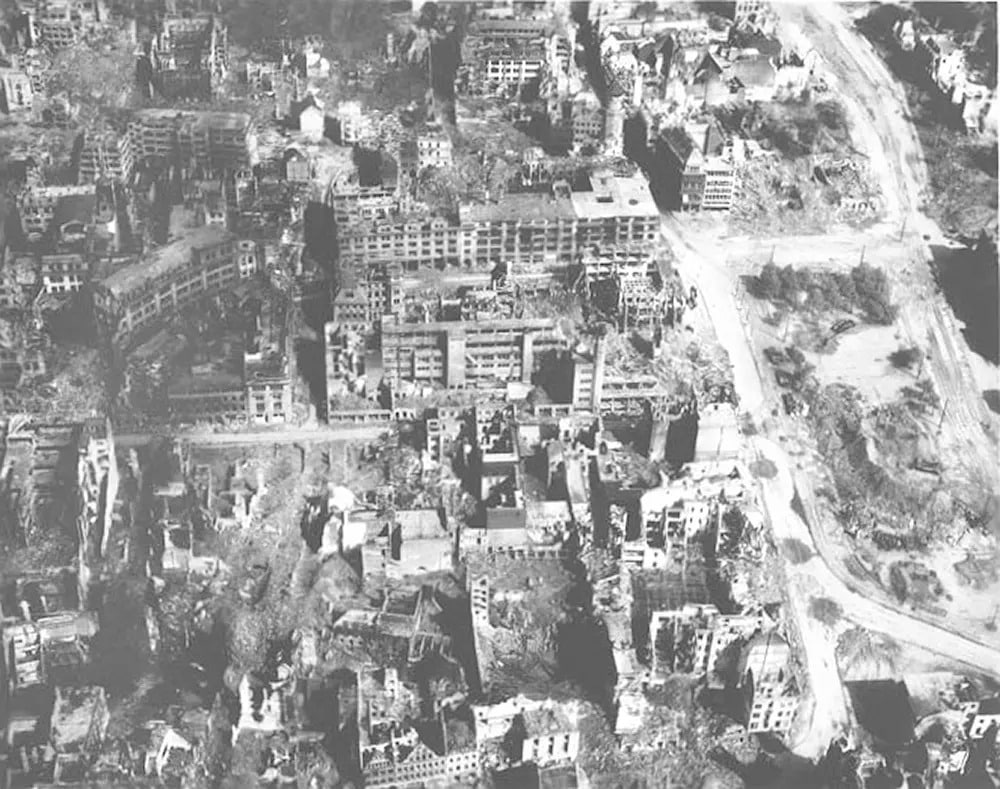

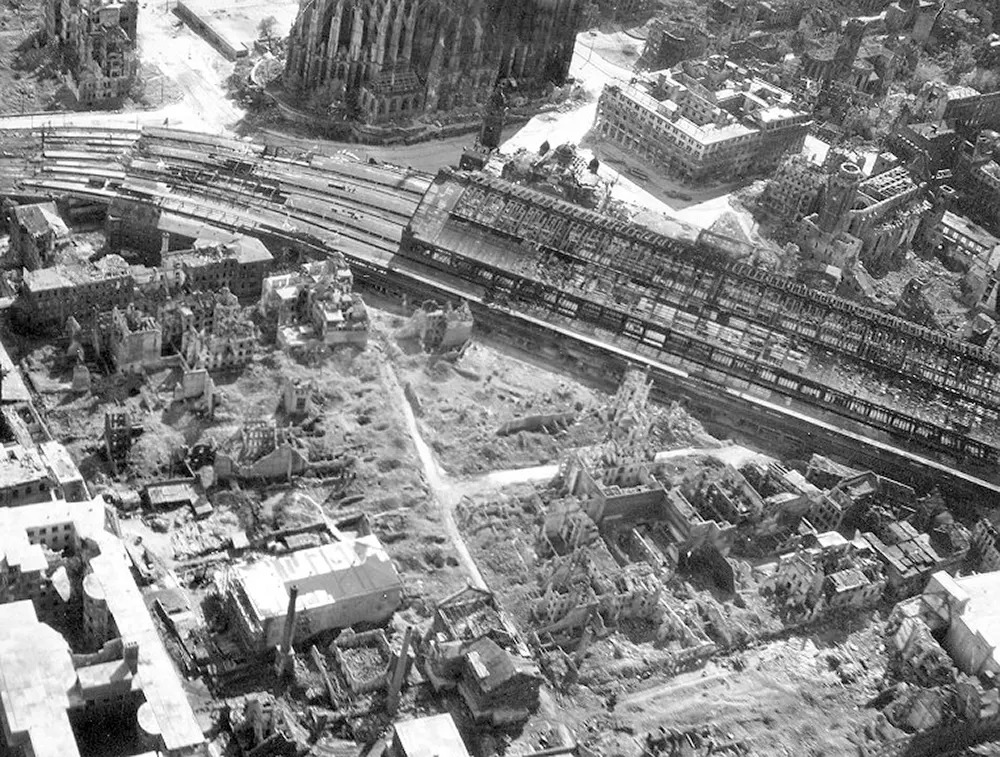
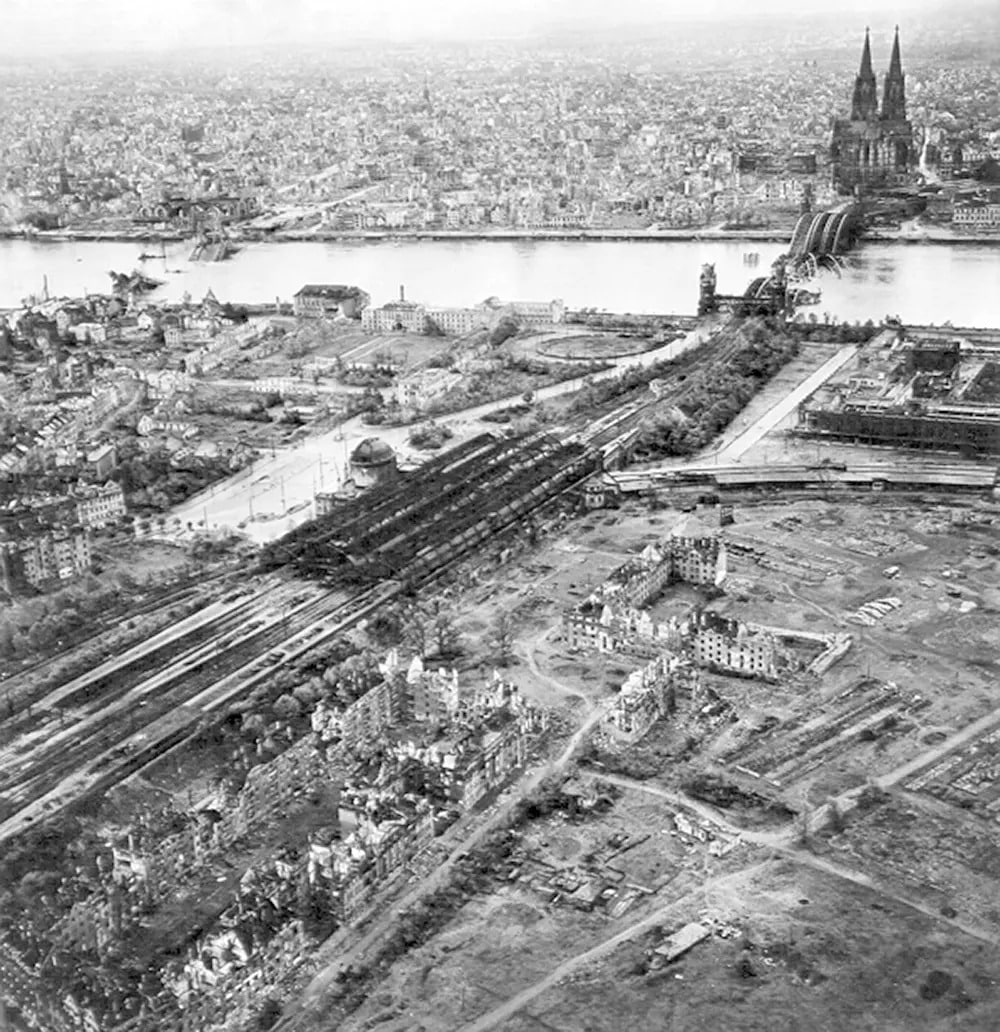
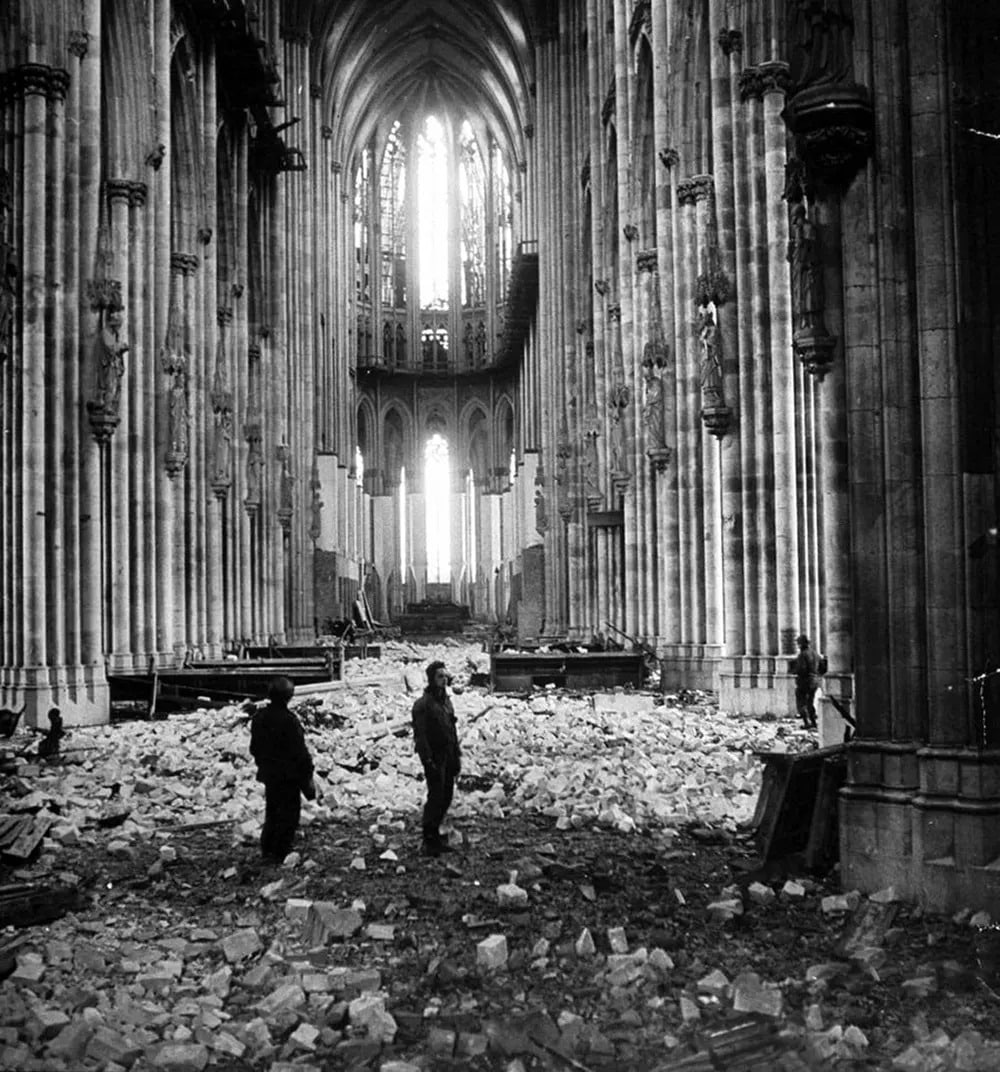
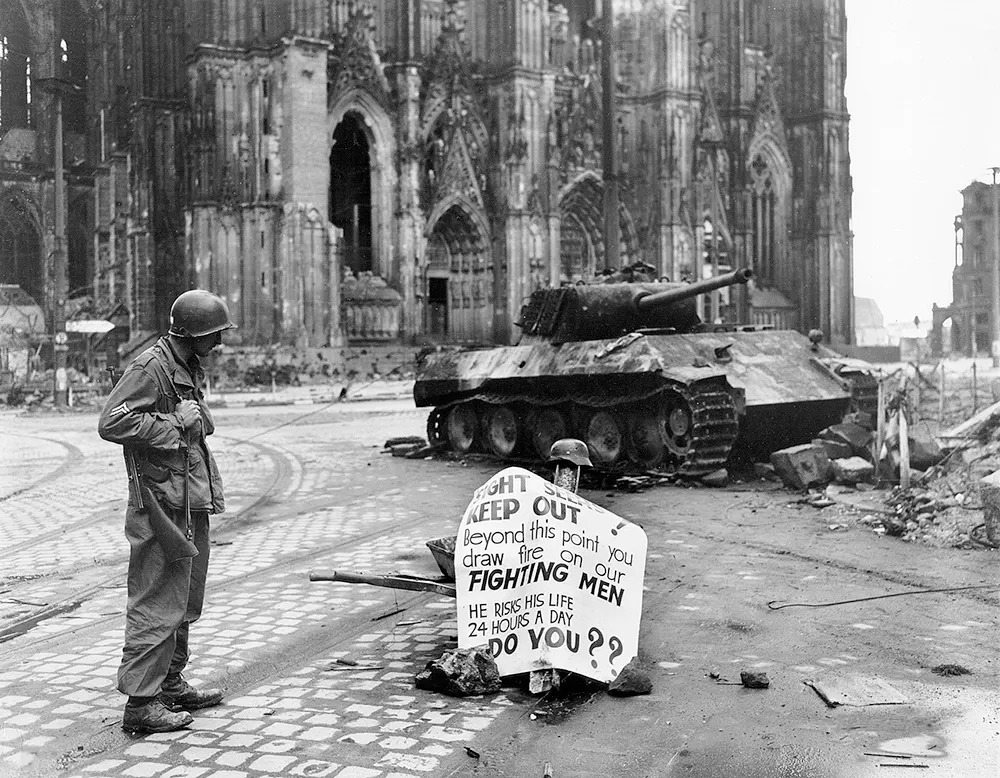
Allied forces seized control of the western part of Cologne on March 6th-7th, 1945. However, the German army retained control of the eastern shore of the Rhine and launched artillery attacks against the Allies. The remaining parts of Cologne were captured between April 12th and 15th, 1945.
Until April 16th, a stretch of approximately 500 meters along the shore was declared a restricted area, with the cathedral located just within this zone. This meant that the cathedral stood in a precarious position amidst the conflict, but despite the dangers, it remained standing as a symbol of resilience amid the chaos of war.
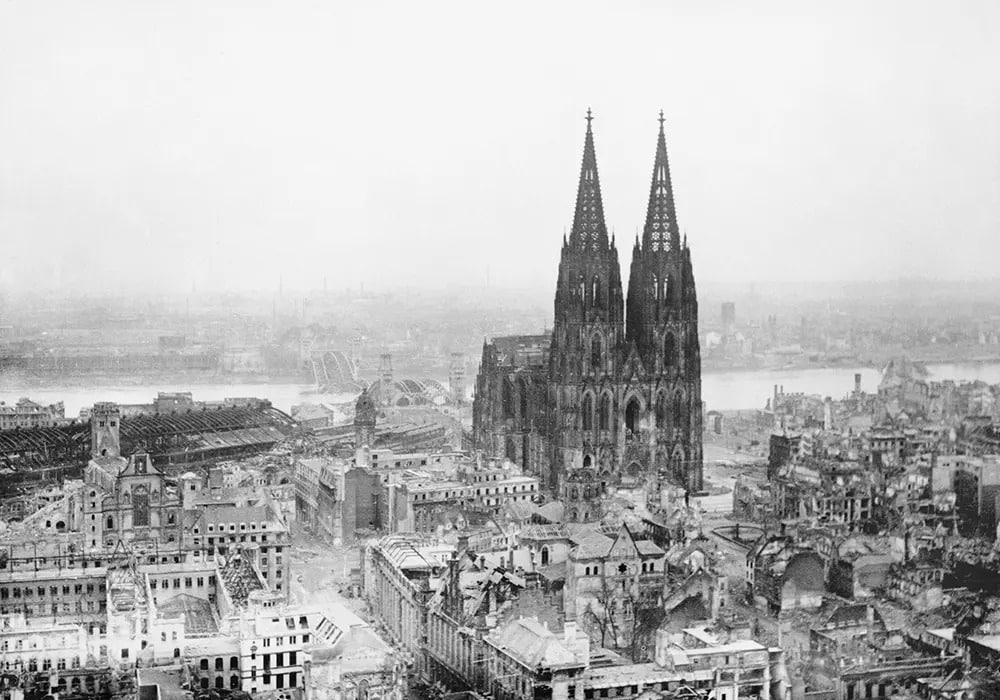
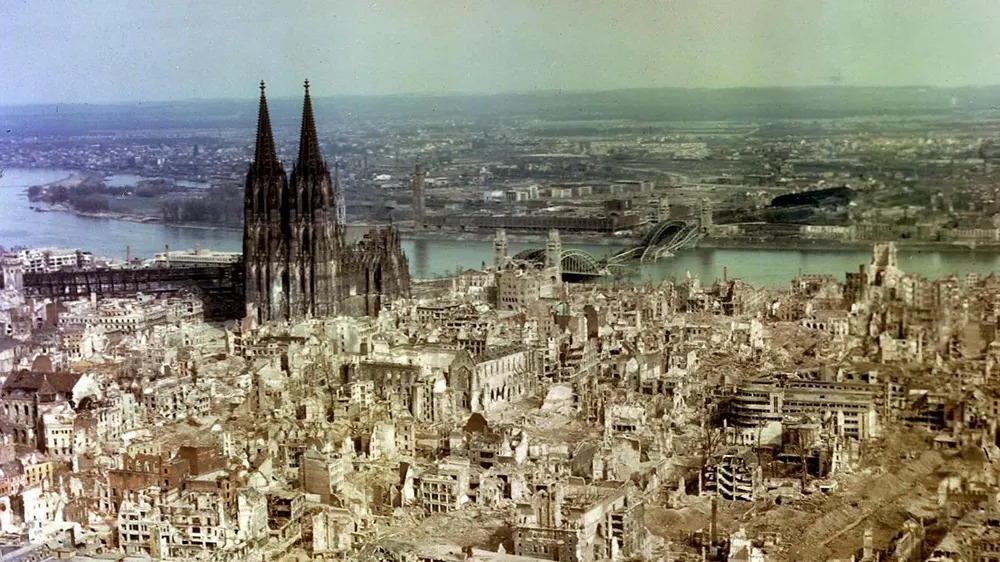
Photo source: US Army Archives / Wikimedia Commons

